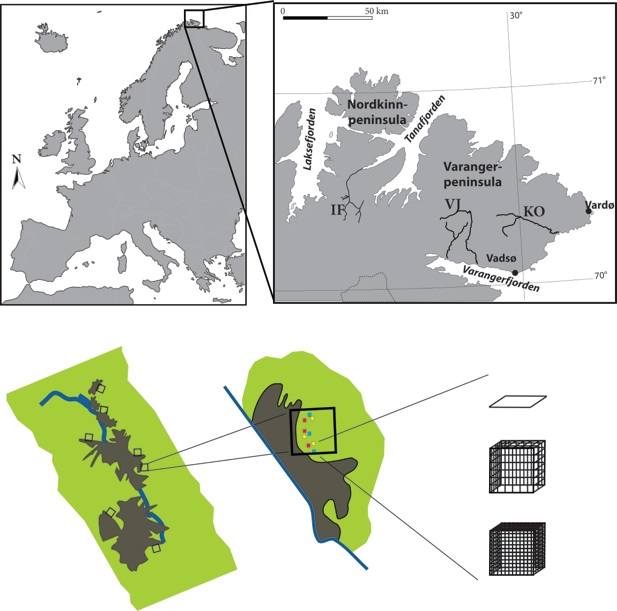STUDY DESIGNS 2

Figure 1. Location and design of the field experiment in three river catchments (IF, VJ, KO) in northern Norway (above left and right). Within each river catchment, experimental grids were set up on meadow vegetation along willow thicket edges (below left, IF n=12, VJ n =13, KO n=12). Within each experimental grid, three groups of three treatments were established; unenclosed, large meshed cages to exclude large ungulates and small meshed cages to exclude all mammalian herbivores (below middle and right).
experimental studies
at the landscape-scale where treatments (such as herbivore exclusion) are randomly allocated to study units by us.

Our aim is to stretch our study designs over landscapes and regions that cover scales relevant for our predictors (such as large herbivores or climate gradients). We often find idiosyncratic responses to our predictors along these scales.
We believe knowledge covering such scales is a must for valid planning of future research, monitoring and management.

